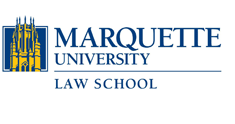Abstract
In May 2010, a coalition of California students, parents, and school districts filed a ground-breaking lawsuit alleging that the state’s public school finance system violates the California constitution. The lawsuit, Robles-Wong v. California, is not ground-breaking because of its basic aim; at last count, school finance lawsuits with similar goals have occurred in forty-four states. Instead, the lawsuit is path-breaking because of the novel approach plaintiffs used to frame their constitutional challenge. Historically, plaintiffs have sued state governments using two legal theories: the equity theory and the adequacy theory. Under the equity theory, plaintiffs argue that the states distribute school resources in a disparate manner that violates equal protection of the laws. Under the adequacy theory, plaintiffs assert that the states deny children their right to an adequate level of education as guaranteed under the education clauses in state constitutions. While litigants suing under the equity theory have lost more cases than they have won, adequacy challenges have met some success: plaintiffs in adequacy claims have prevailed in two-thirds of the thirty-three cases in state courts. In recent years, however, plaintiffs have grown less likely to prevail in their school finance challenges, losing six of eleven cases decided since 2009. Moreover, as I show in an empirical analysis of school spending levels in twenty-two states, even those states that have experienced successful adequacy and equity lawsuits continue to spend less than the amount necessary to provide their children with a quality education. Responding to these trends, the Robles-Wong plaintiffs allege a new and different form of constitutional violation: that the state’s school finance program violates the state’s constitutional duty to provide a “system” of common schools because it is not “intentionally, rationally, and demonstrably aligned” with the educational goals described in statewide academic content standards. As this Article explains, this constitutional violation alleged in Robles-Wong, which I call the “broken system” cause of action, represents a significant evolution in the historic journey of school finance litigation. In addition to describing the textual and legal basis for this new theory, I argue that it builds on the experiences of its two predecessor theories, responds to important trends in education policy reform, and offers courts a manageable framework for ensuring that state school systems are in compliance with the substantive educational guarantees of state constitutions.
Repository Citation
Aaron Y. Tang,
Broken Systems, Broken Duties: A New Theory for School Finance Litigation,
94 Marq. L. Rev. 1195
(2011).
Available at: https://scholarship.law.marquette.edu/mulr/vol94/iss4/6
